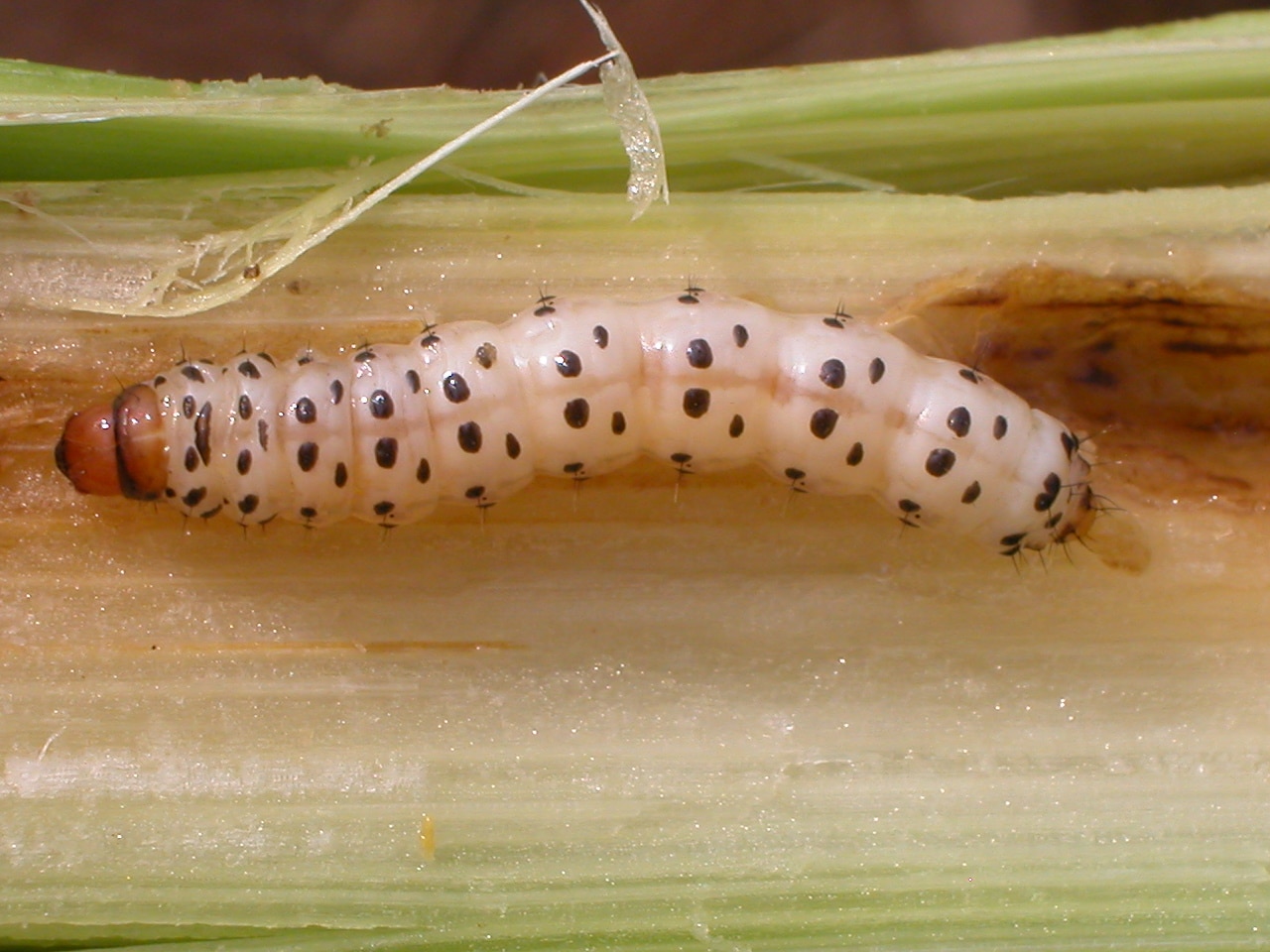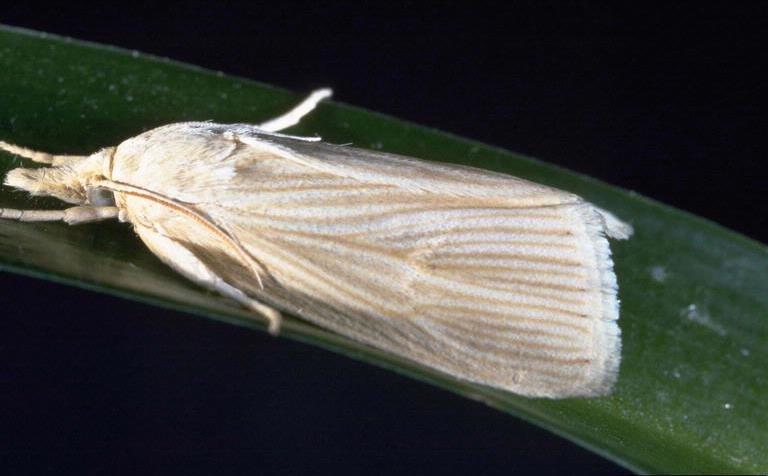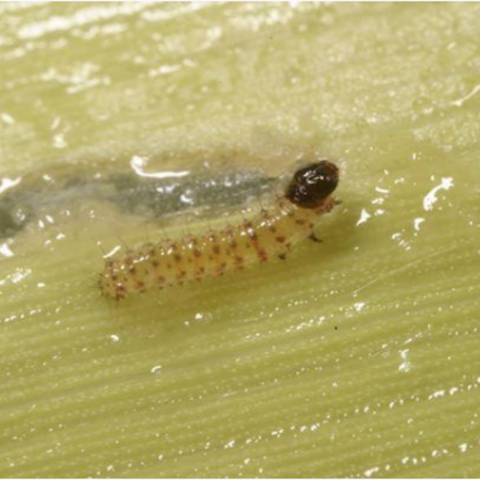Southwestern Corn Borer
Diatraea grandiosella
|
Southwestern corn borer eggs. |
Southwestern corn borer larva. |
|
Southwestern corn borer adult. |
Southwestern corn borer early instar. |
The first generation of southwestern corn borers begin to lay eggs in late June. Larvae are white with dark spots and feed for 5 to 10 days within the whorl before tunneling downward into the stalk. Tunneling may kill the growing point on small plants, causing 'deadheart', although such injury is unusual on plants greater than 30 inches tall. Although first generation larvae can cause yield losses, the damage is rarely serious unless the majority of the plants are infested with multiple larvae.
The second (and most damaging) generation occurs in August. Adult moths begin emerging and laying eggs around July 15 to July 23, with oviposition reaching a peak somewhere between Aug. 1 to Aug. 15, the exact timing depending on weather and geographic location. Eggs are laid mostly on leaves in the ear region. Newly hatched larvae begin feeding on leaves, but soon move to feed on ear shoots, husks, and silks, and within 10 to 12 days, begin tunneling into stalks, generally below the ear zone.
Most larvae are full grown by mid-September and will have tunneled down to the base of the stalk below the soil line to prepare for hibernation. Larvae then begin to lose their dark spots and appear as large, white larvae. In preparation for overwintering, many larvae cut a girdle around the stalk from the interior, leaving only a thin layer of the exterior stalk. Girdling usually occurs from Sept. 1 to the first week of October.Girdled plants soon break and lodge, contributing to extensive harvest losses.
First generation moths tend to be active in sandy regions of southern Kansas, particularly where no-till practices teave stubble undisturbed through the winter. Second generation activity is not limited to those fields with first generation infestations but will extend to surrounding fields. Emerging moths of the second generation may fly for miles in search of attractive corn in which to lay eggs, sometimes causing severe damage in fields where first-generation activity was negligible or absent.
Management
Corn varieties expressing Bt traits against European corn borers will also control southwestern corn borers, so scouting and management can be restricted to refuge plots where these hybrids are planted. Treatment thresholds for the first generation are not well established but are assumed to be close to those for European corn borer, except for a greater need to monitor smaller plants for deadheart. Most insecticide treatments are directed at second generation larvae. Insecticide applications should be considered on susceptible corn hybrids when 20 to 25 percent of the plants are infested with eggs or newly hatched larvae.
The following management practices can reduce losses to southwestern corn borers in areas subject to infestation.
- Harvest early, before girdling begins, as girdling usually increases rapidly after mid-September. In order to harvest early, consider planting a short-season hybrid early, plant a high-yielding silage corn, and harvest while moisture is still high.
- Consider fall tillage to break up root stubble and expose borers to natural enemies and winter temperatures.
- On hard land, deep plowing of corn stubble to a depth of 5 or more inches will bury larvae and/or pupae, and prevent most moths from emergening successfully the following spring.
- Avoid planting corn late. Extremely late-planted corn is sometimes heavily infested with second generation borers, and losses due to tunneling can be extensive. Harvesting before girdling begins may be harder to achieve, unless silage corn is used.
Resistant Hybrids
The majority of corn hybrids grown in Kansas now express specific Bt toxins that make them resistant to corn borer feeding. Insertion of the Bt gene into corn DNA is known as a transformation event, and many events have been patented that have inserted the same or different genes. Many hybrids are now 'stacked' with multiple genes targeting both corn borers and rootworms. Refuge plots are still required for most Bt hybrids, but the requirements vary, and some seed is sold with the 'Refuge in a Bag', so growers should read and understand the refuge requirements for each hybrid planted. Conventional management is still recommended in refuge plots. It is best to consult with your local seed dealer to get the latest information.
For more information regarding corn borers, click here.
Please consult the most recent Corn Insect Management Guide for more information on corn borer management.
Page last updated 4/2/2024 by J.P. Michaud.



